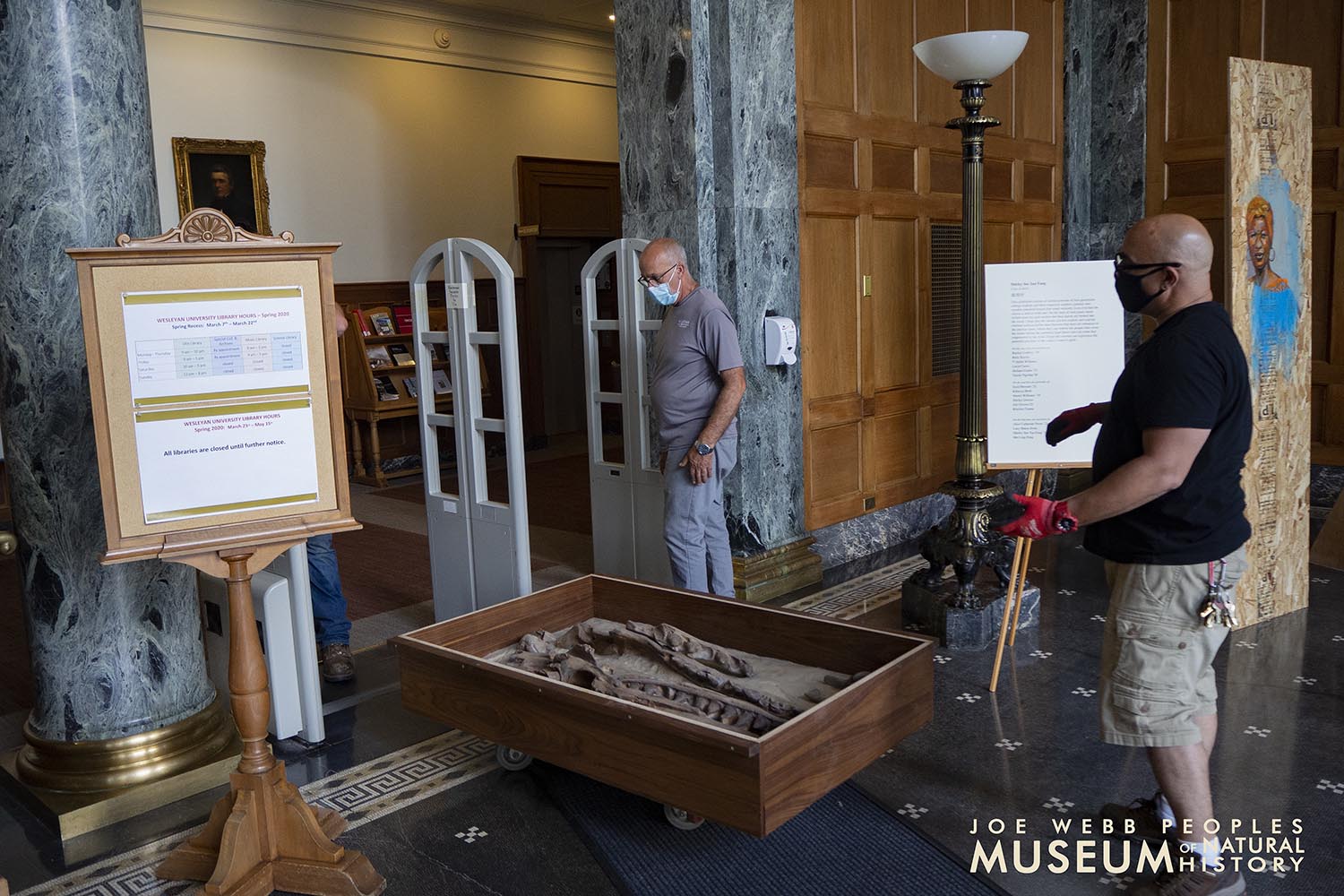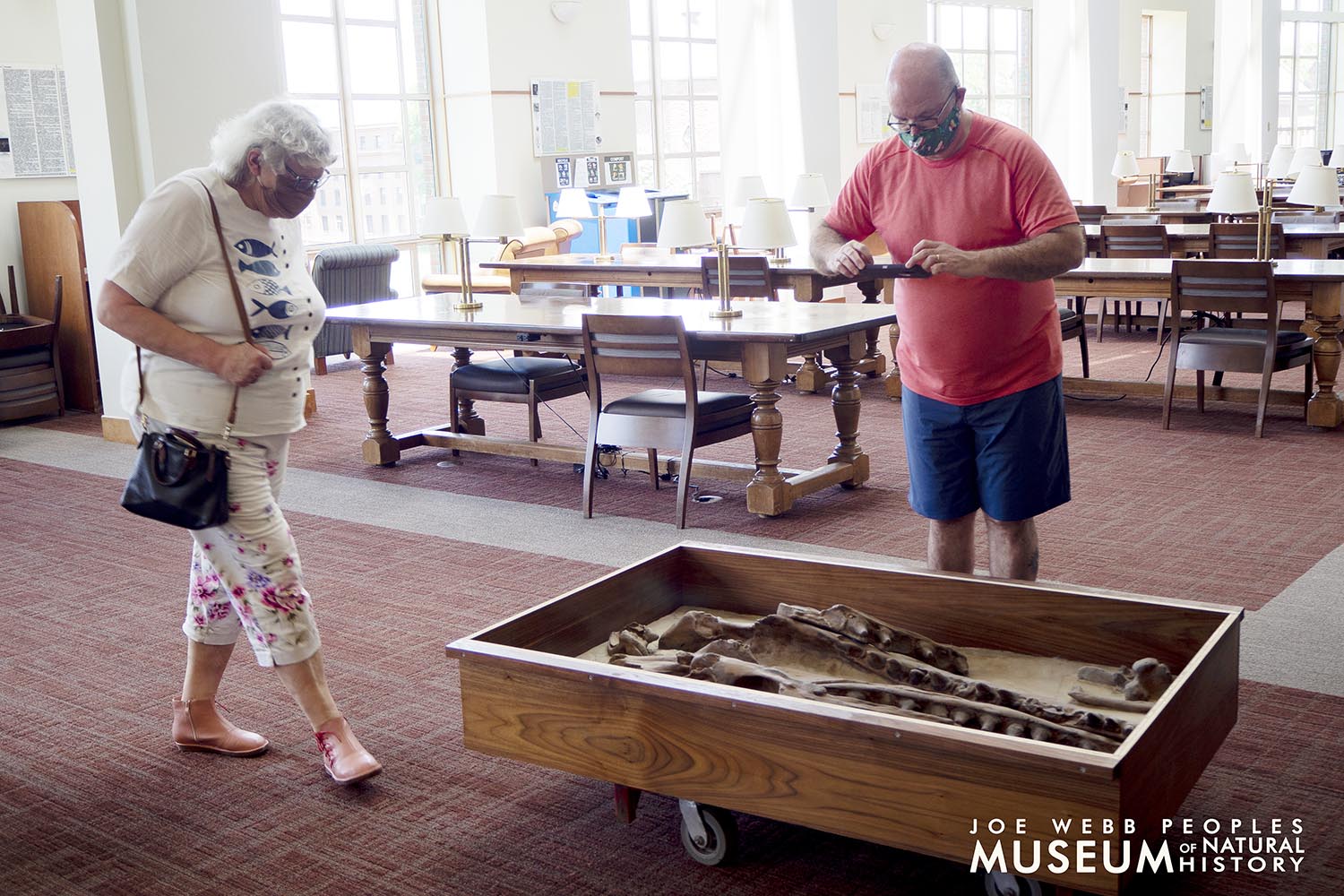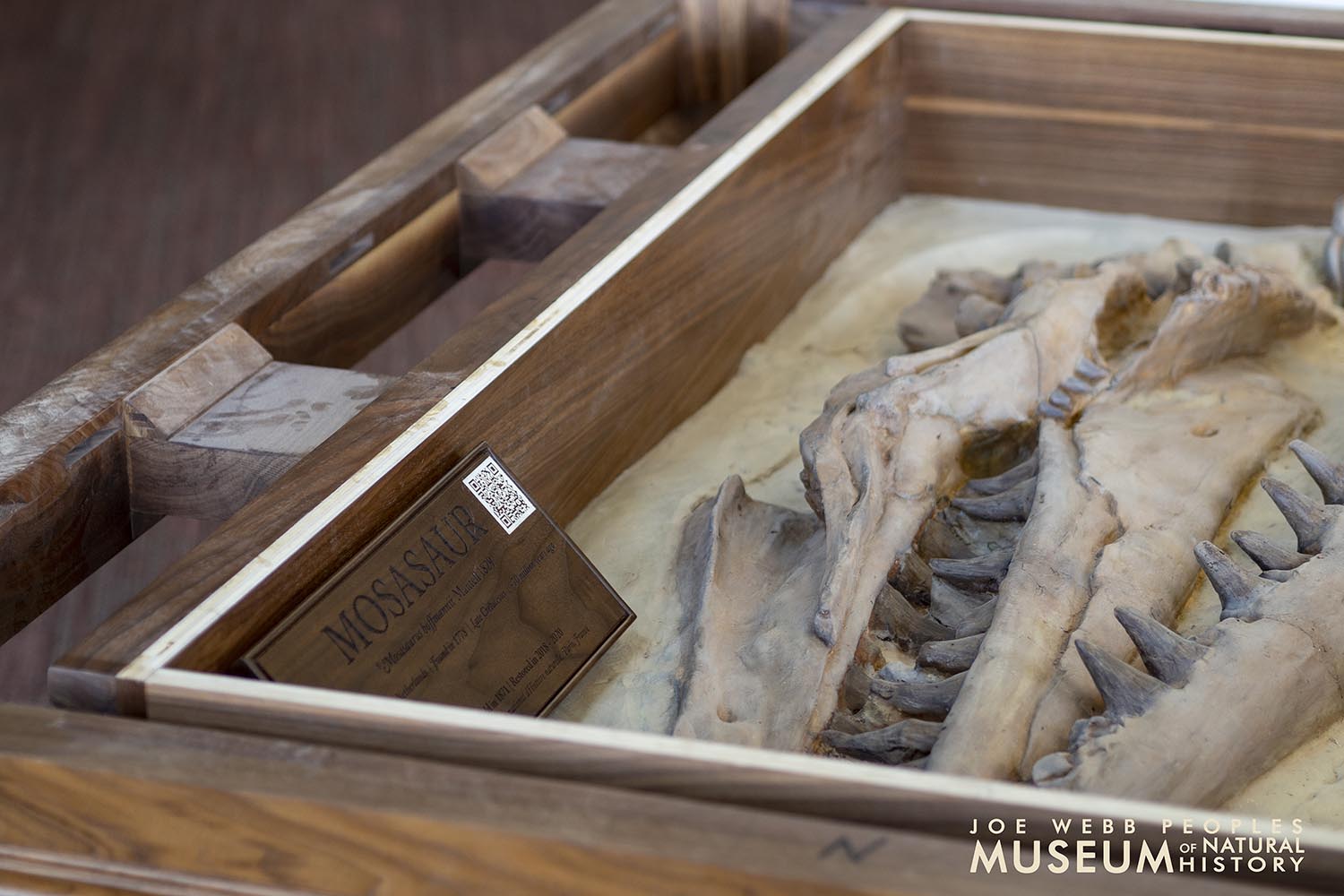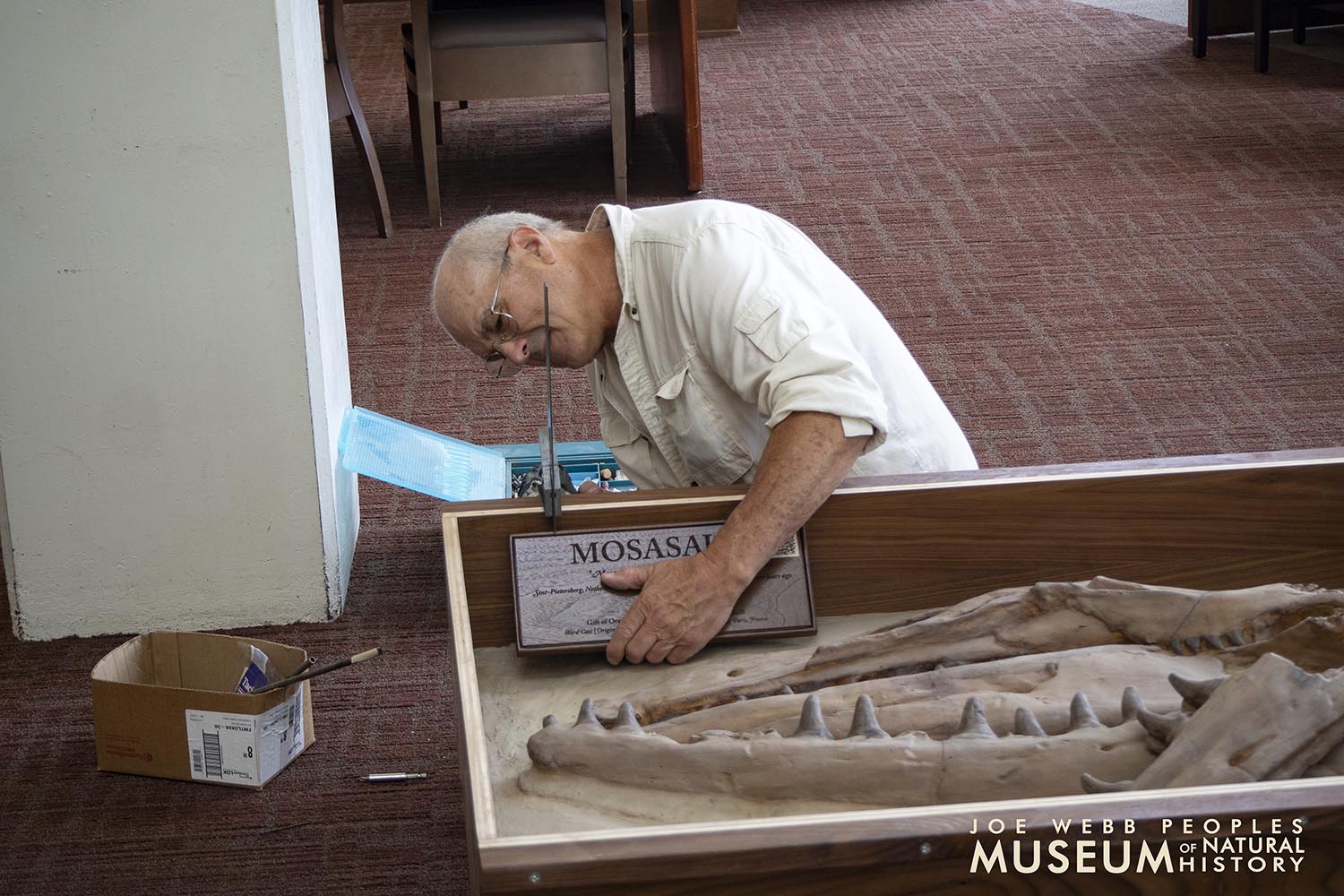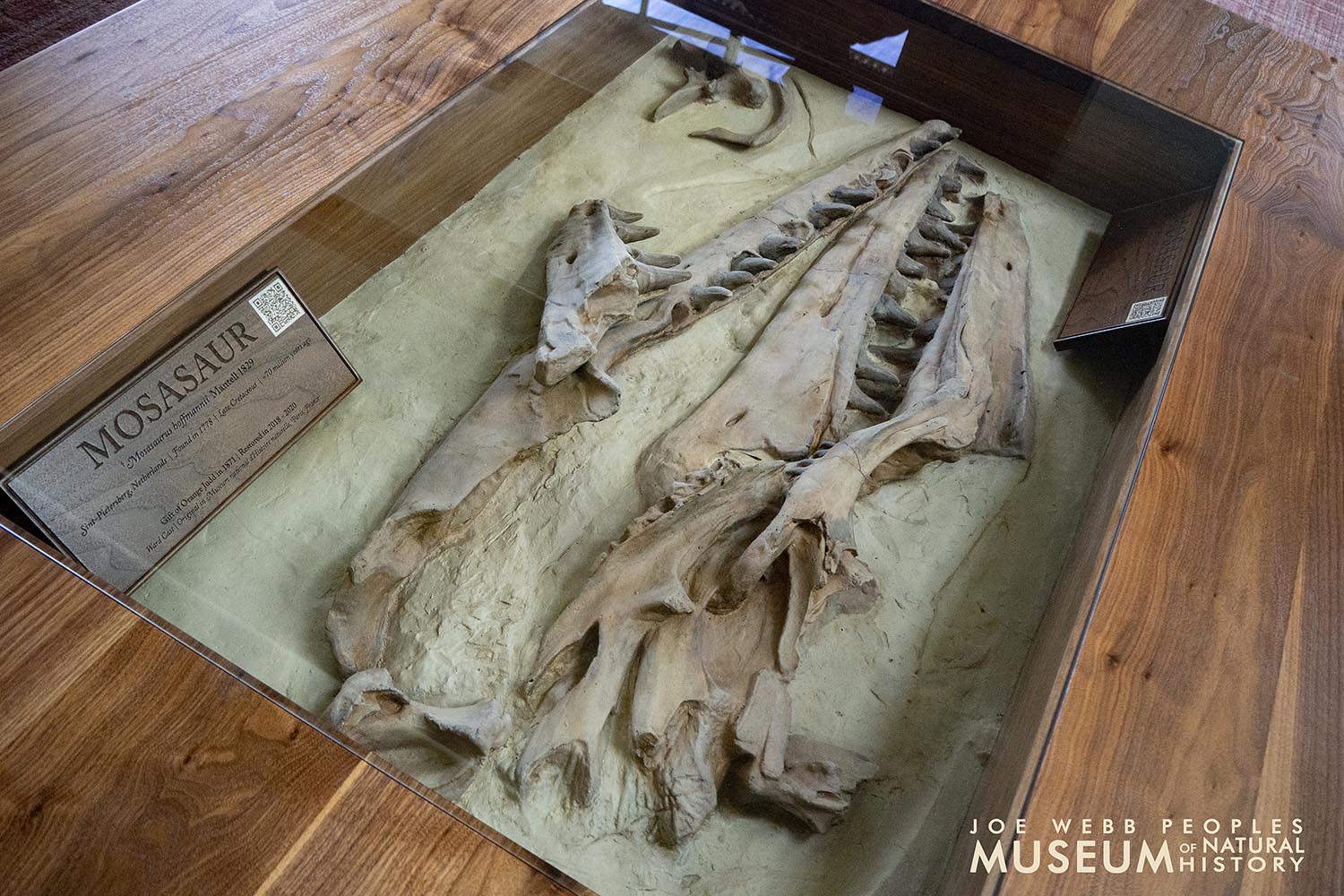Prehistoric Marine Lizard Exhibited Permanently in Olin Library
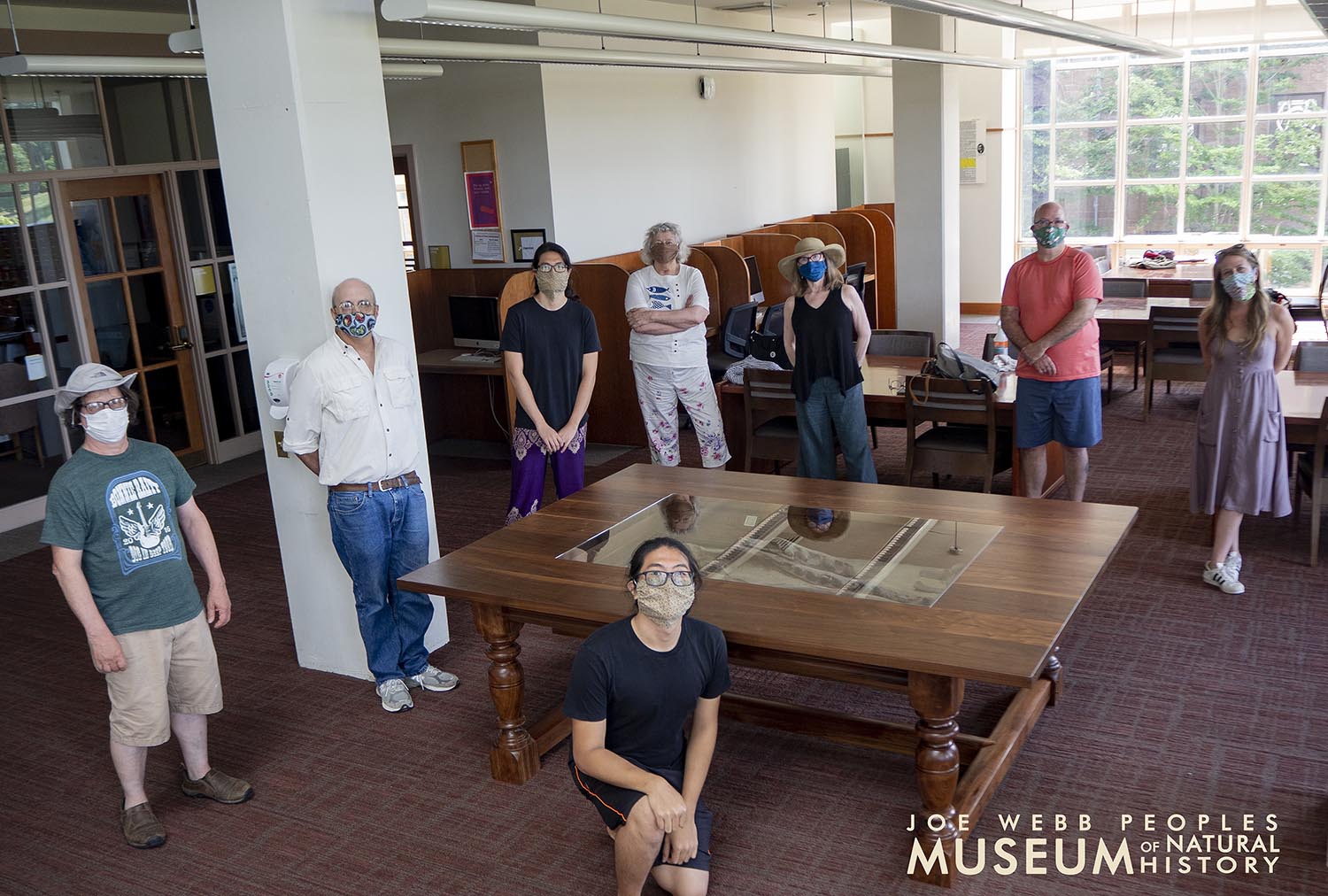
As part of the University’s efforts to “activate campus,” a third prehistoric creature has taken up residence at Wesleyan.
The new Mosasaur exhibit is on permanent display inside Olin Library and is a collaboration of faculty, student, and staff efforts.
Mosasaurus hoffmannii Mantell (Mosasaur), a marine lizard, lived in the oceans during the Late Cretaceous period (66 to 68 million years ago) when the last dinosaurs walked the Earth. Mosasaurs had long, snake-like bodies with paddle-like limbs and flattened tails. Some specimens grew to be more than 50 feet long.
In 1871, chemist Orange Judd of the Wesleyan Class of 1847 donated the Mosasaur cast to the University, where it was prominently displayed for years at the University’s Orange Judd Museum of Natural Sciences. In 1957, the museum closed and thousands of artifacts, including the Mosasaur, were haphazardly stuffed into crates and boxes and stored in random locations throughout campus. For 60 years, the cast remained in its crate, first in the tunnels below Foss Hill, then tucked in the Exley Science Center penthouse, from where it was exhumed by Wesleyan staff and students in 2017.
Freeman Scholars and Wesleyan’s Joe Webb Peoples Museum of Natural History interns Yu Kai Tan ’20 and Andy Tan ’21 spent the past two years preparing the object for a permanent exhibition. They also designed a Mosasaur exhibit StoryMap, which provides historical background. The map is accessible through a QR code, posted with the display.
“It’s been a very long process to get this one installed from its original dilapidated condition,” said Ellen Thomas, Harold T. Stearns Professor of Integrative Sciences and Smith Curator of Paleontology of the Joe Webb Peoples Museum of Natural History. “It was dug up from a pile of crates in the penthouse and now that it’s gone through a great restoration by Andy and Yu Kai, it’s looking much better than when it was new.”
On June 22, crews mounted the restored Mosasaur cast in a glass-topped black walnut table built by Jim Zareski. The project was supported by a 2019–20 Paleontological Society Outreach and Educational Grant to Ellen Thomas and Ann Burke for the project “Using Natural History Collections in Liberal Arts Education: A New Look at an Old Mosasaur.”
The Mosasaur is now a permanent exhibition of Wesleyan’s Joe Webb Peoples Museum & Collections. The Mosasaur is the first Joe Webb Peoples artifact to be displayed outside Exley Science Center. In February 2018, crews installed a Glyptodon cast, and in February 2019, a Deinotherium cast.
Additional photos of the installation are below: (Photos by Andy Tan)
